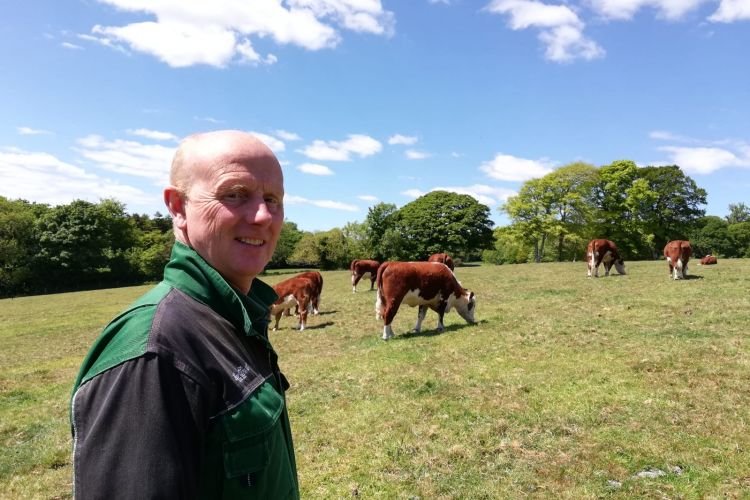
Reducing cows’ intervals between calving is one of the key improvements that Welsh beef farmers are aiming for in order to increase the efficiency of their herds.
The British Cattle Movement Service (BCMS) has recently released calving interval data for beef cattle in Wales for 2019.
The data shows that beef cattle on average calved at 1,013 days old in 2019 – a figure which has fluctuated in recent years, and is up 12 days from the figure in 2018.
The BCMS report for 2019 shows that beef cattle in Wales produced a new offspring every 426.1 days, up from 422.7 days in 2018 but similar to the average calving interval in 2017.
Hybu Cig Cymru – Meat Promotion Wales (HCC) is working with a number of farmers who are working towards improving their herd fertility and lowering calving intervals through the Stoc+ project.
The scheme is a flock and herd health project which is one strand of the Red Meat Development Programme (RMDP), a five-year Welsh government and European Union-funded initiative aiming to enhance the red meat sector in Wales.
Leading the project is HCC Flock and Herd Health Executive, Dr Rebekah Stuart, who said breeding and fertility is one of the most important aspects of running an efficient suckler system.
She said poor herd fertility can have a major impact on farm output and income: "It’s important to have a defined calving period, and setting clear objectives in terms of calving intervals.
"Through the project, the team will work with participating farmers to try and improve their calving intervals," Dr Stuart said.
“There remains scope for improvement in Wales. Producers should strive for a shorter calving interval period in order to improve their beef herd efficiency and therefore increase their likelihood of improved profitability.”
One farmer whose calving interval is lower than the average is David Burnhill, who’s the head stockman at the Hean Castle Estate in Pembrokeshire.
The Hean Castle Estate has a herd of 90 pedigree Hereford cattle with the hope of increasing to 130 breeding females split between spring and autumn calving periods.
At the moment, the herd’s calving interval is 369 days per animal: "The management of the heifers in the spring is quite straightforward as they are selected from the previous year’s calves, selecting the more ‘well grown’, judging both by eye and weight," Mr Burnhill said.
These heifers are then synchronised and served for easy calving: "The second group of females are allowed to graze and grow and are then served during the winter period to calve in the autumn.
“Prior to serving, the management of the perspective autumn calving heifers with regard to feeding and health treatments becomes quite focused, with routine vaccinations and dosing needing to be planned and implemented in advance."
Mr Burnhill explained that feeding is introduced on a rising plain with an aim to achieving maximum conception rates possible for both groups.
